CORE IV: Near-Future City, Urban Assemblages Encoded for Change
Studio Coordinators: Rosalea Monacella, Jill Desimini, Instructor: Danielle Choi
Spring 2020 (Remote March-May)
Elemental Electric
Nora Chuff, Kanchan Wali-Richardson, Maxwell Smith-Holmes
Electricity is elemental. The energy which takes form through constant transformations is harnessed through manipulations of wind, water, sun and earth. Elemental Electric seeks to foreground these cyclical, eternal processes— to recognize that lightning is accompanied by rain.
Elemental Electric imagines folding electricity generation into the potentials of urban water flows.
With an eye towards both the historical role of water-powered energy in Dorchester and the current ecological impacts of the regional electricity grid, we propose an experimental form of historic preservation that seeks to highlight the potential of water to generate power while also providing a model for a less environmentally degrading form of both power infrastructure and water management.
Dorchester, Boston, MA
The lower Neponset River, which demarcates the southern edge of Dorchester, was the site of many of the first water powered mills built in the colonial US. The first Neponset Mills were established in 1600’s, with the Lower Mills complex built in 1765
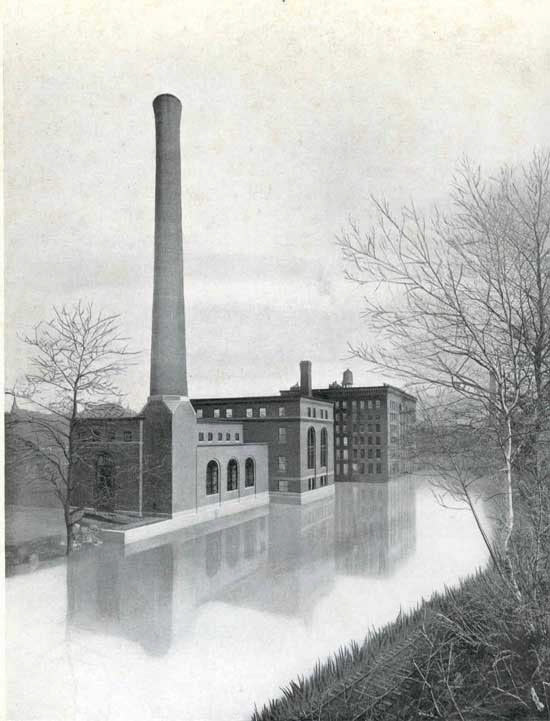
Walter Baker Factory, Dorchester 1906
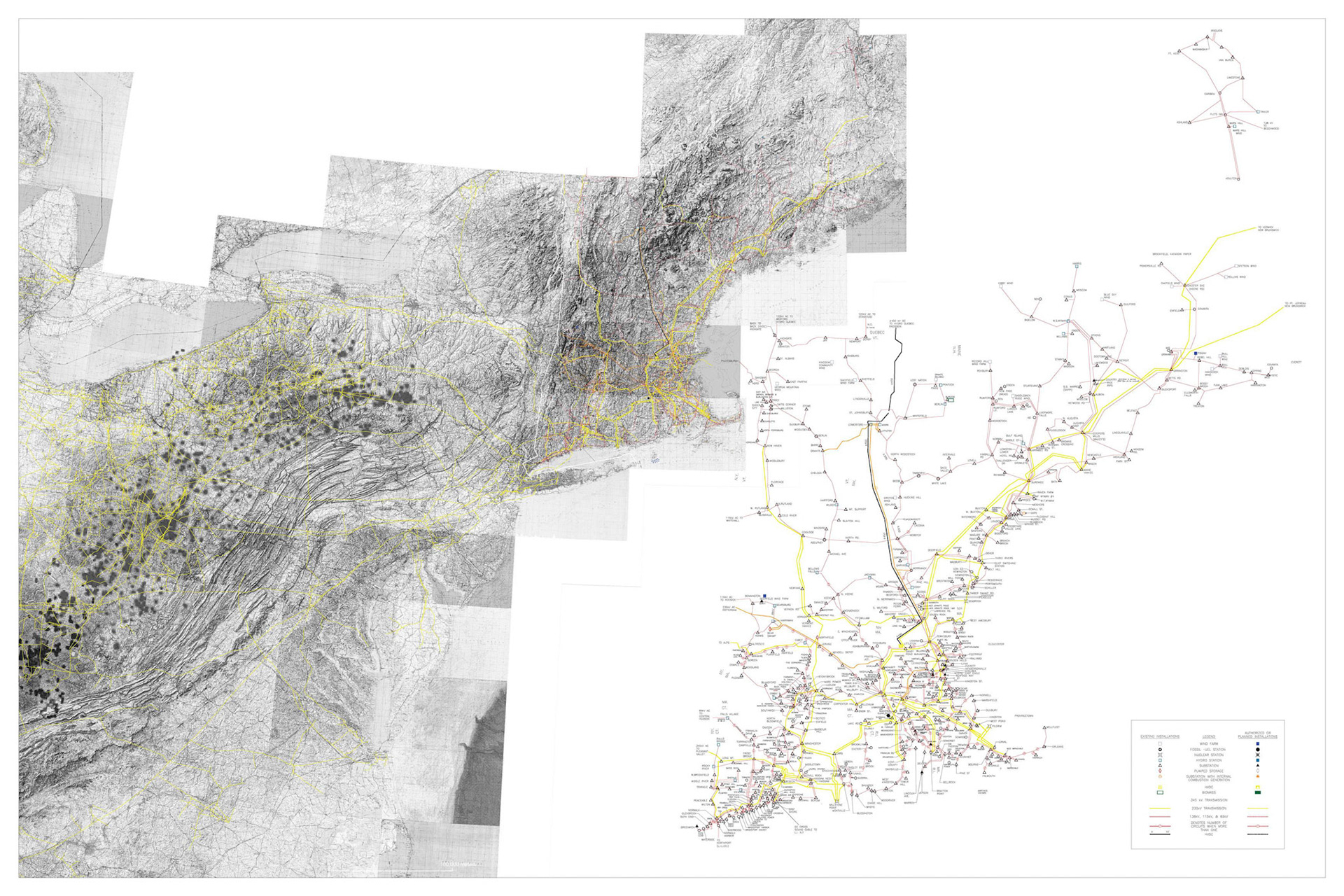
Studies of the Regional Electricity System: Production, Distribution, Use
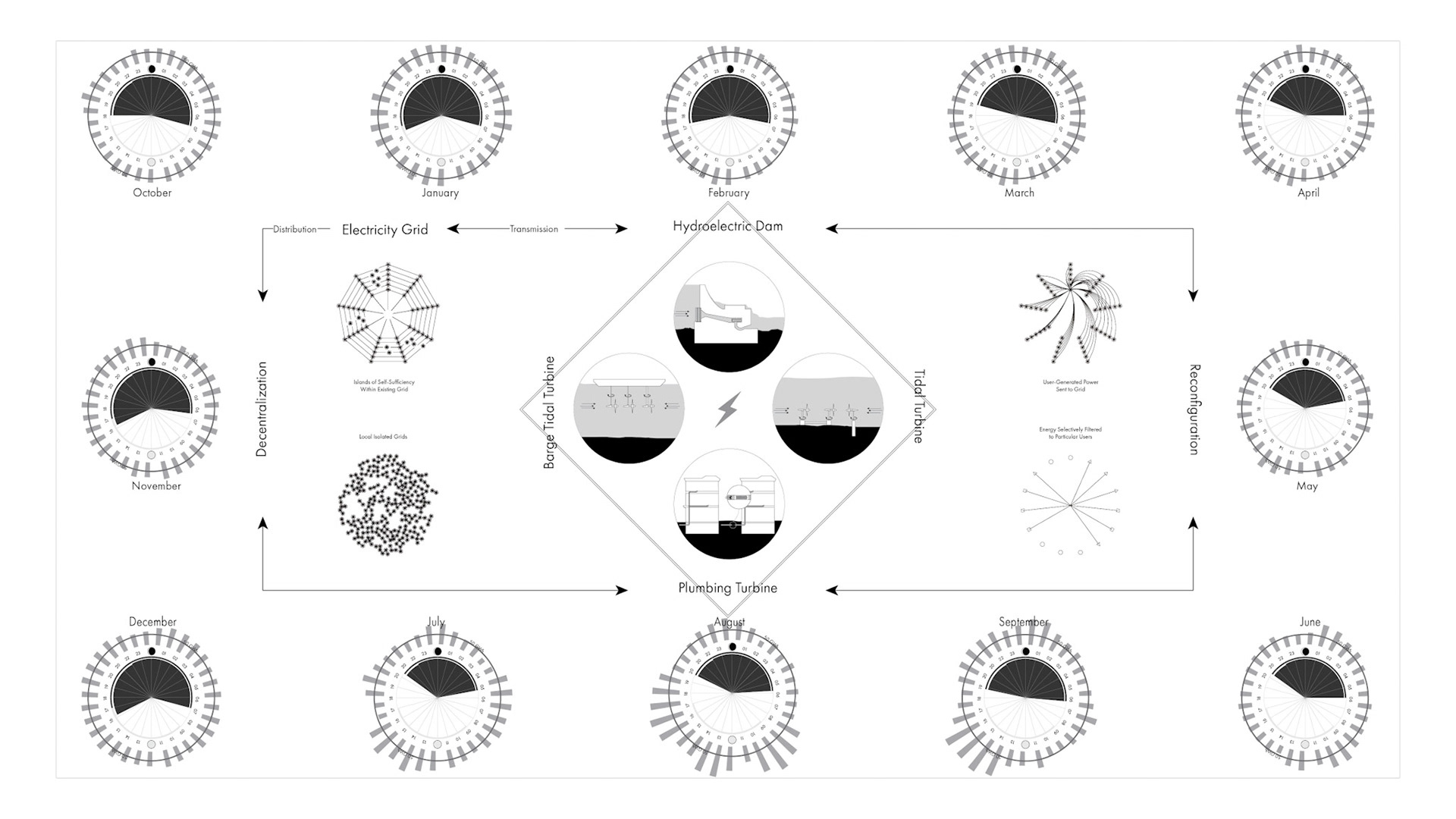
Energy use and potentials
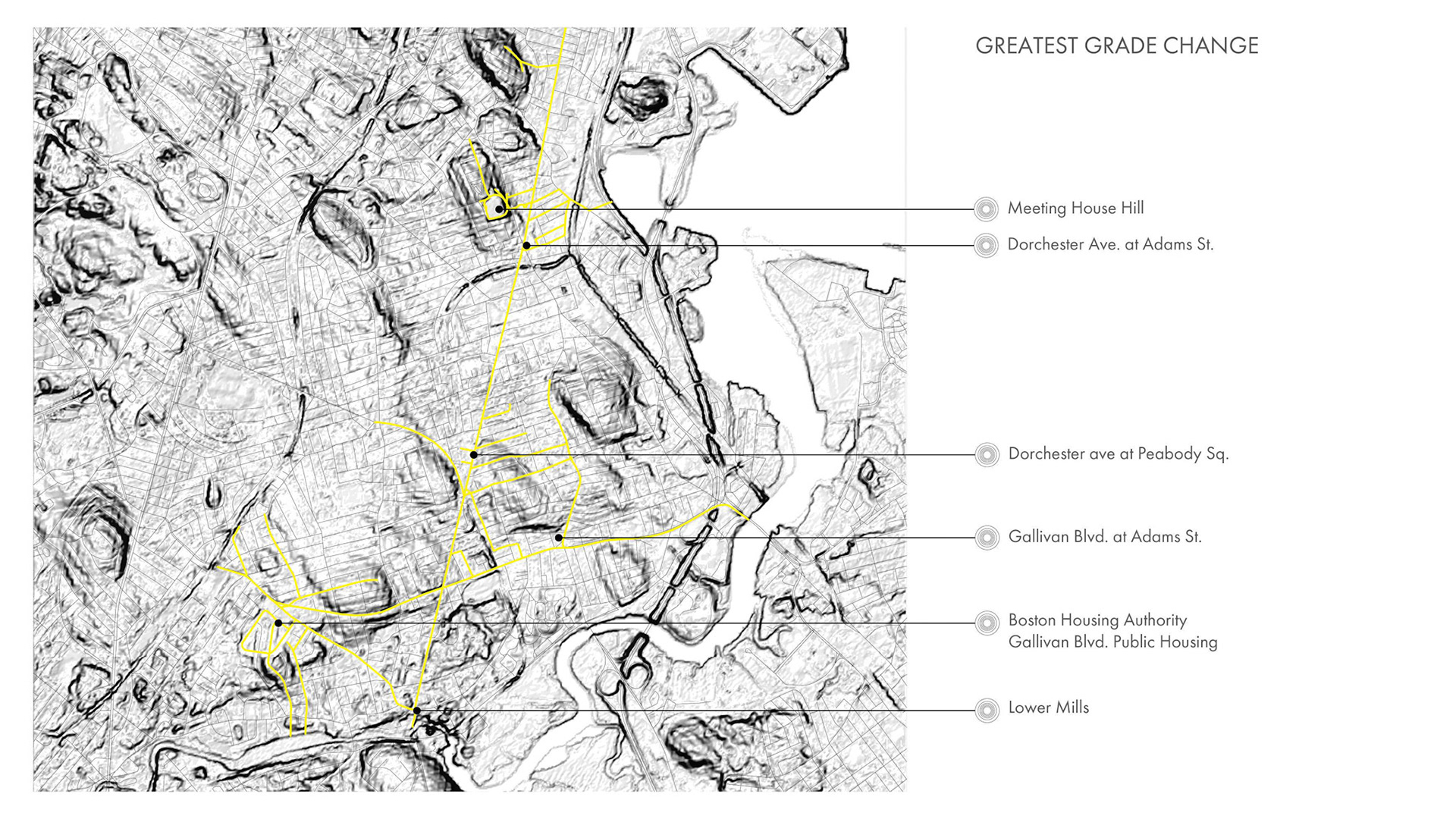
Site Analysis Social | Topographic | Systematic
By viewing the basic hydrological behaviors of topography as sources of kinetic energy, new sites for hydroelectric generation can be discerned within the urban landscape ranging from the height differential between gutters and the street to water’s gravita- tional flow downhill. Stormwater runoff cal- culations now also identify the productive capacity of urban watersheds.
We have identified three main operations: hold and generate, run of the river— which places turbines in above ground canals— and in-line harvesting—where turbines are embedded in the potable water main lines fed by gravity. There are countless permutations and innovations happening in turbine technology. We are interested in a wide range of systems – from micro turbines that generate enough electricity to light a single street-light, to 42” in line turbines able to power hundreds of homes.
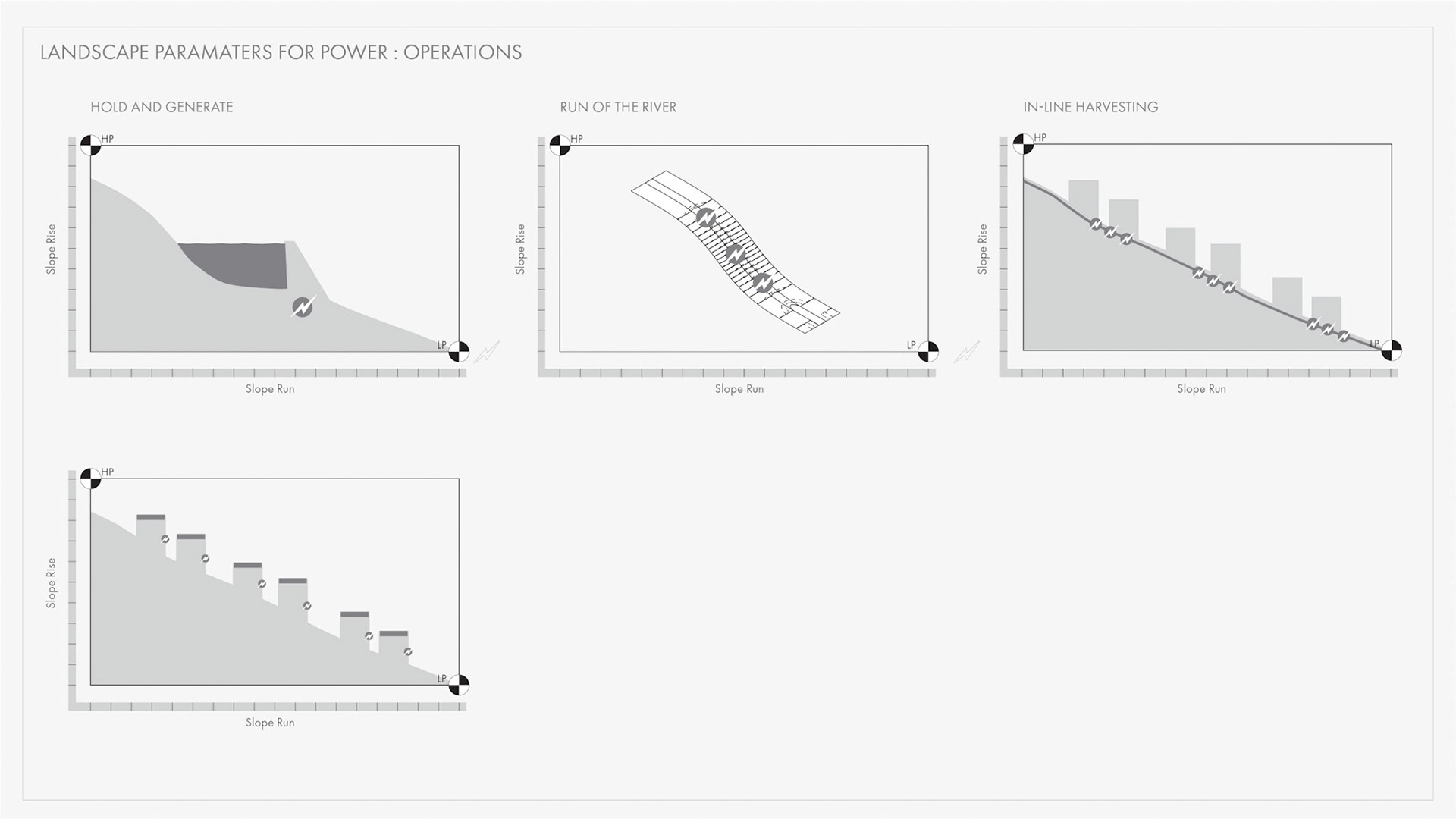
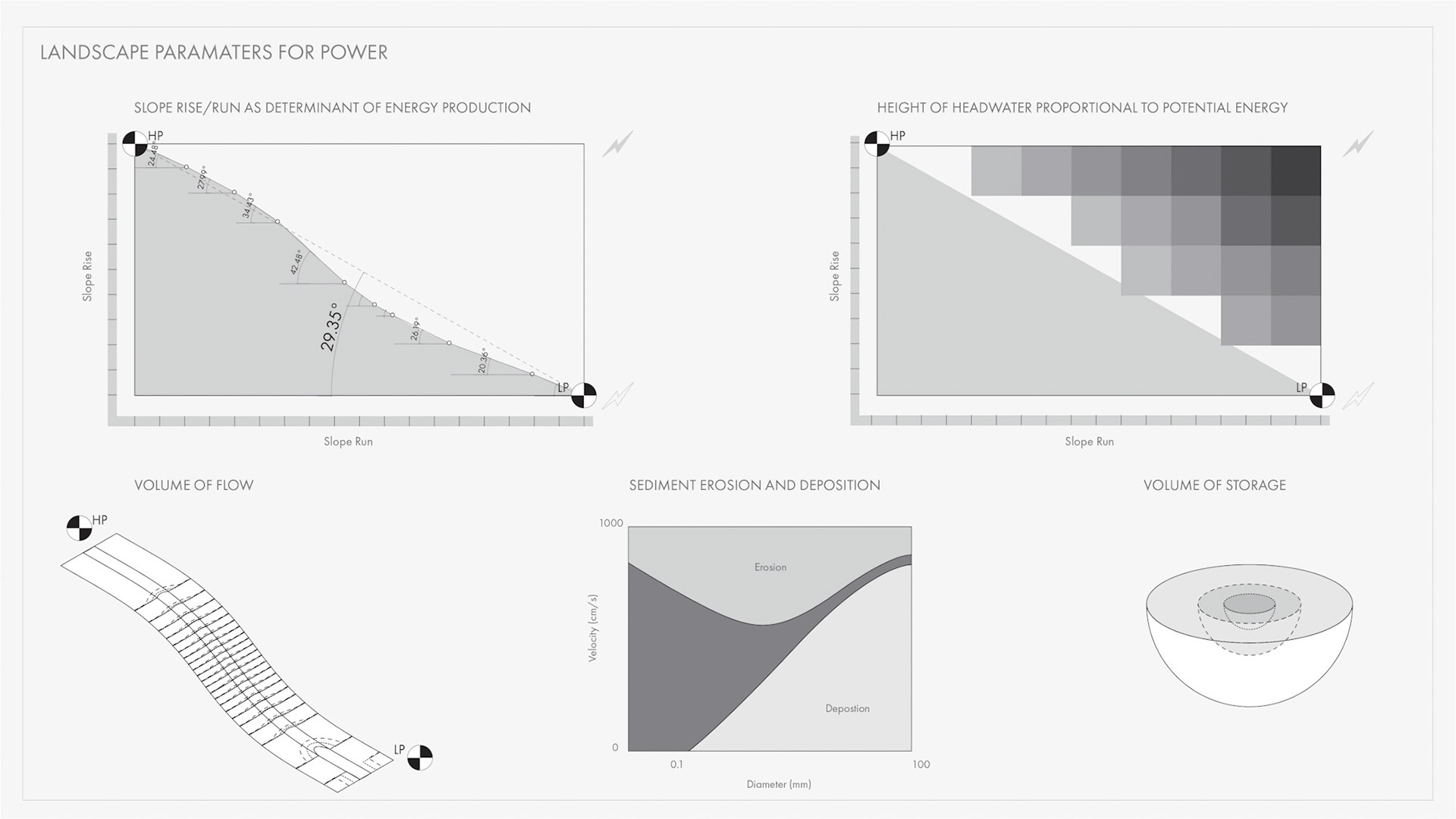
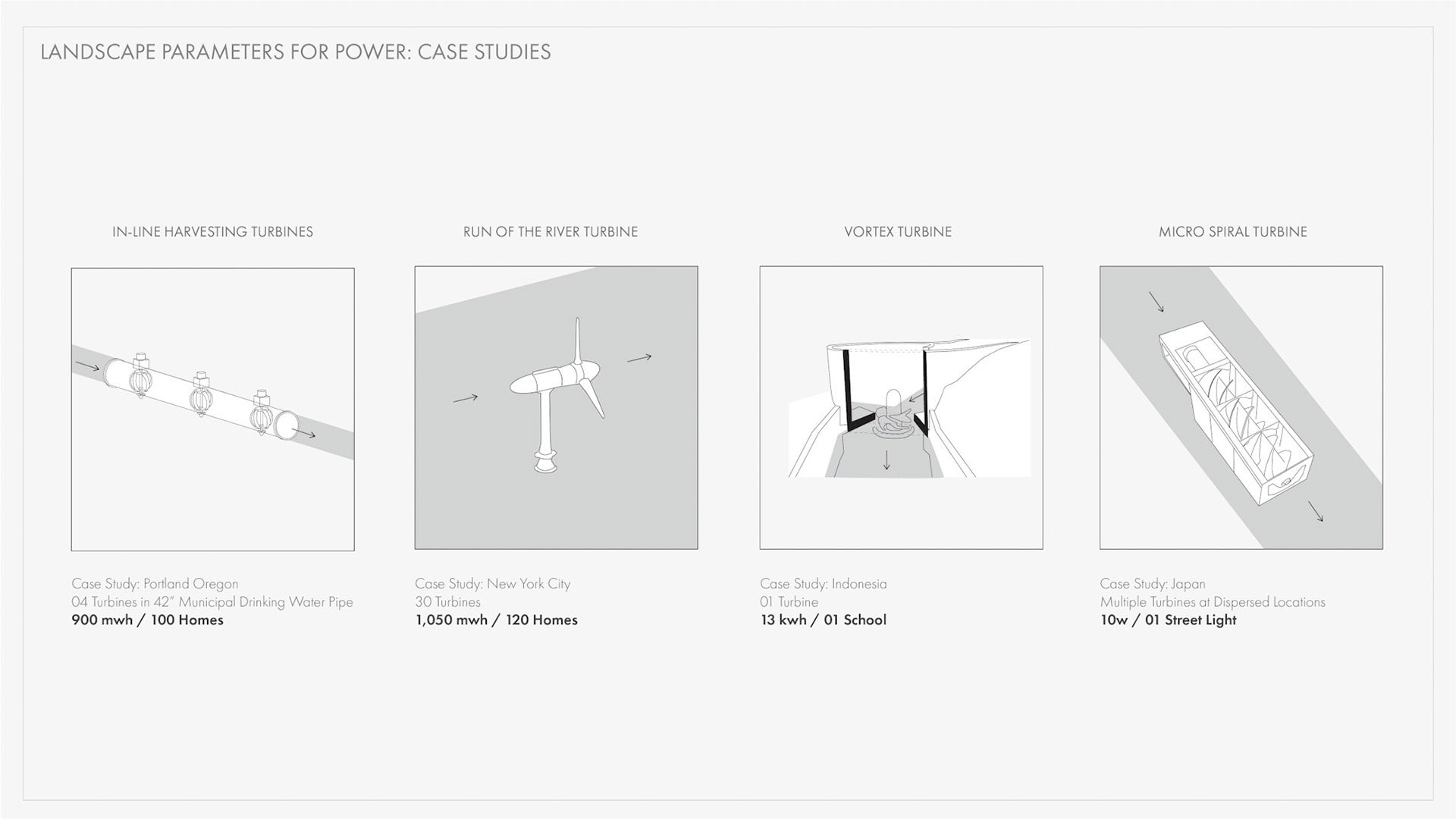
Dispersed electricity generation feeds back into the grid, supporting it during times of peak need and subsidizing the cost of electricity for the people of Dorchester
The EE system combines network features of several different grid formations. Electricity produced through turbines sited in public rights-of-way will be managed as a public utility and fed back into the main regional electrical grid. While incentiv- izing individual modifications, our project calls for a government-led infrastructure project to ensure the system’s equitable deployment by avoiding privileging those with more time for environmental activism and resources for DIY home improvement.
Precipitation fluctuations determine whether the system acts as a battery or is actively generating electricity.
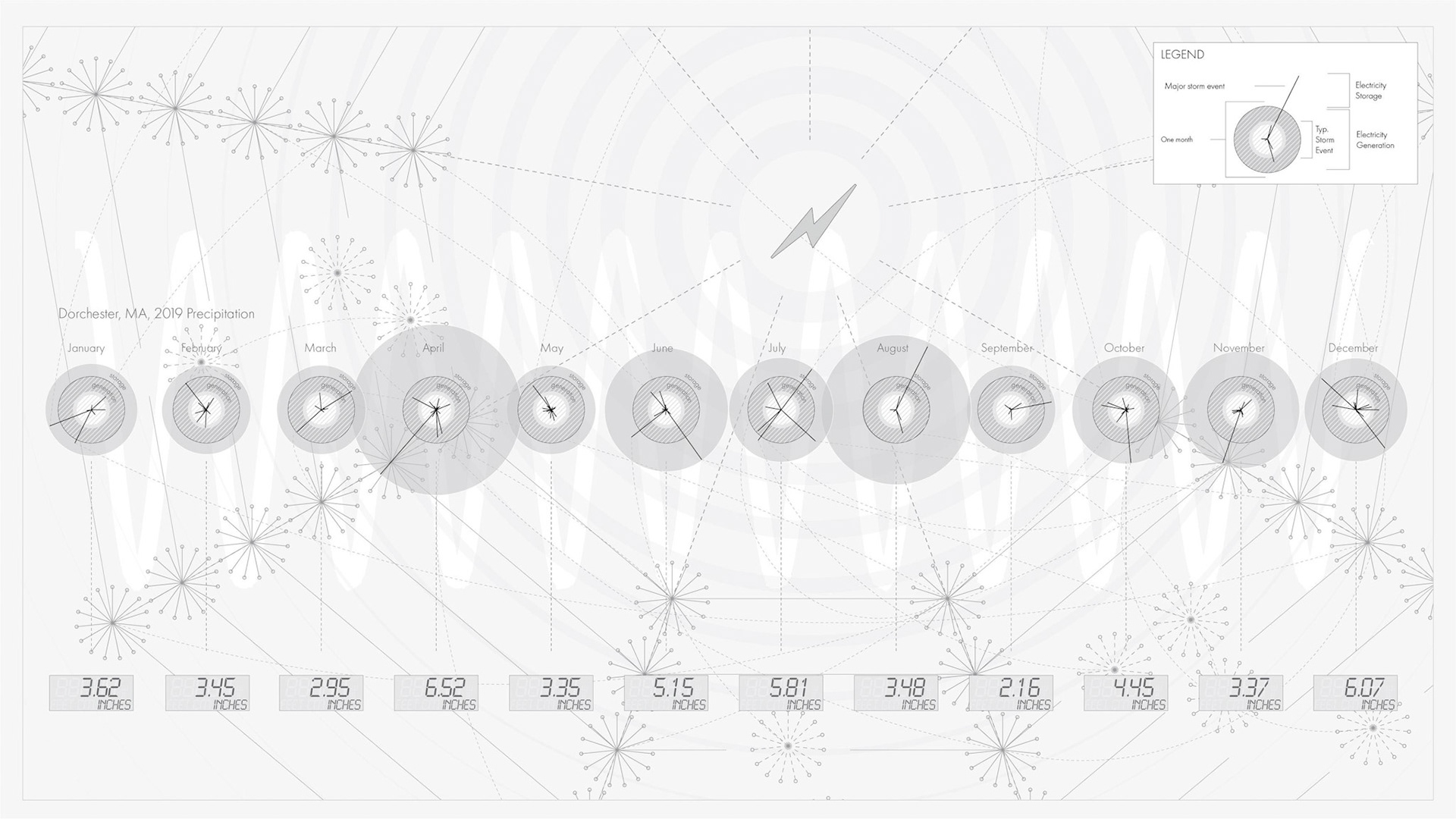
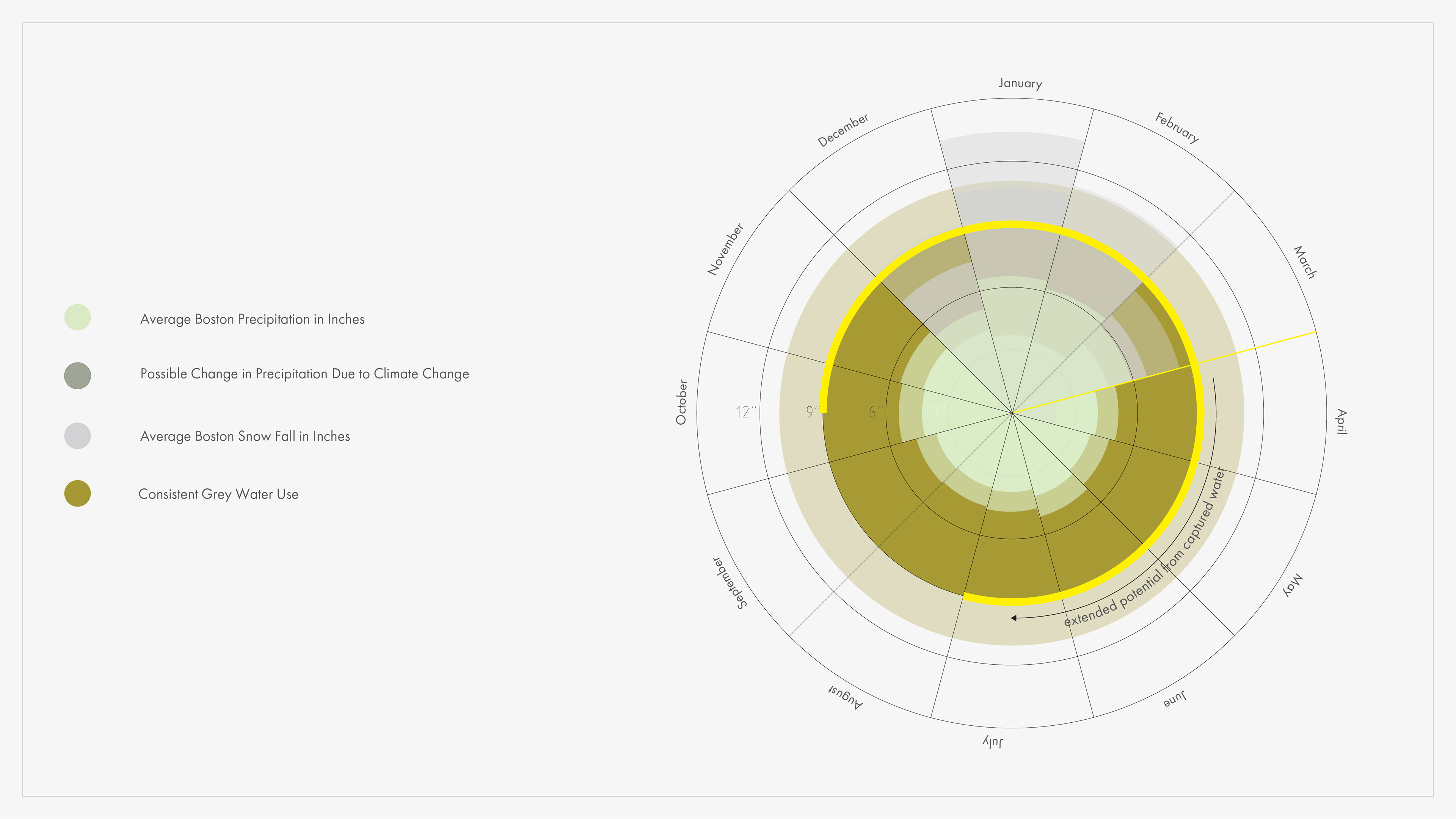
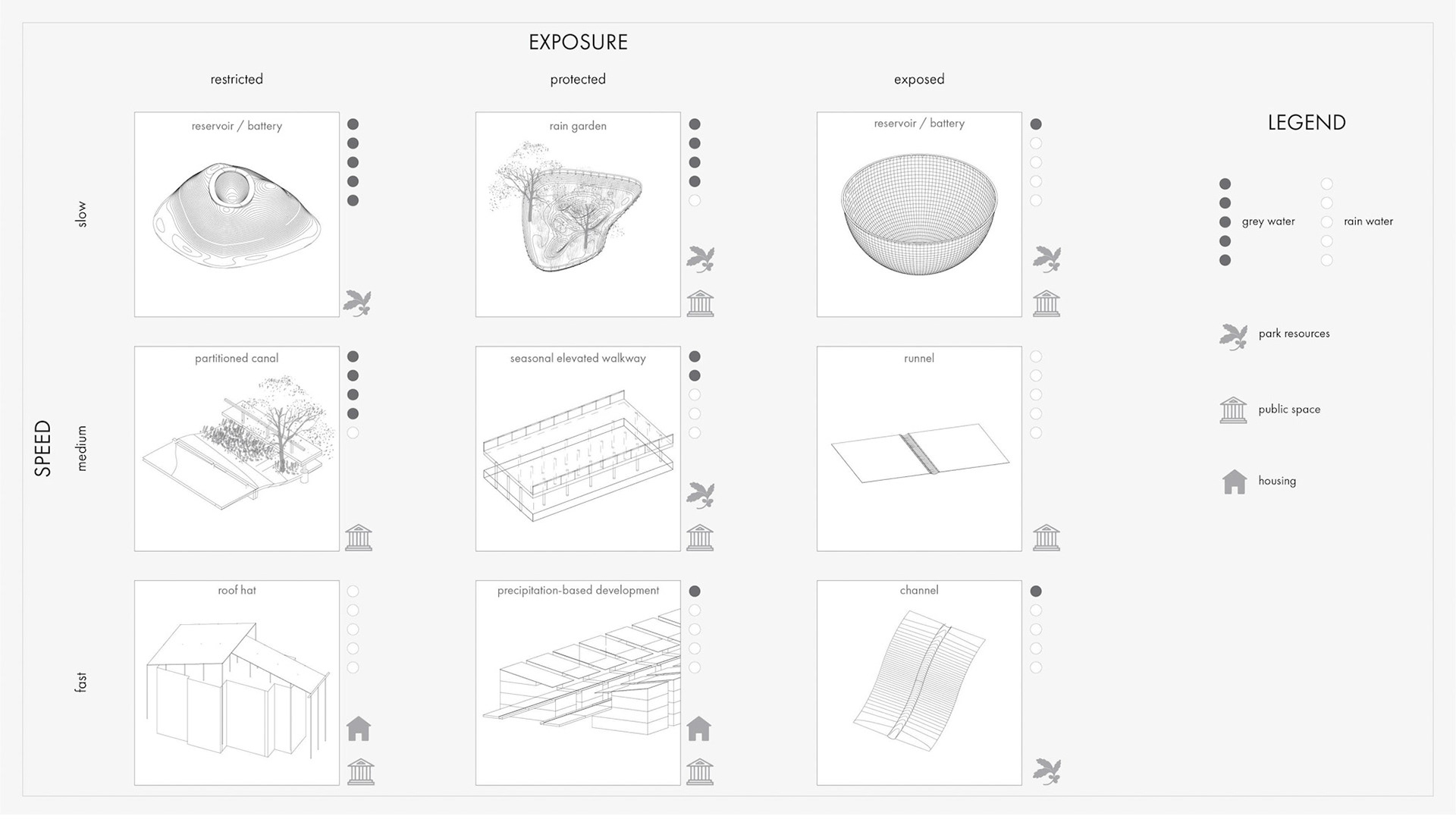
When the grid is most taxed, water is released from potential energy storage areas through channels, runnels, pipes, and along slopes to turn small hy- dro-electric turbines while orienting city life around a productive watershed.
These spatial tactics are deployed depending on existing topography and the balance of rain water to grey water to generate new urban programs. Seasonal fluctuations in rainfall means that some sites will be designed to flood during rainy months while street-lev- el activity is temporarily elevated via raised walkways.
With water now reclassified as a productive utility for the public good, current policies that require rainwater to be retained by individual parcels are selectively reversed on a case-by-case basis to increase water flow. In these situations, pitched attachments to flat roofs encourage water to enter canals rather than the existing stormwater system.
Vegetated canals treat urban and grey water before it turns any turbines. Pedestrian circulation is separated from both vehicular circulation and the water treatment canal.
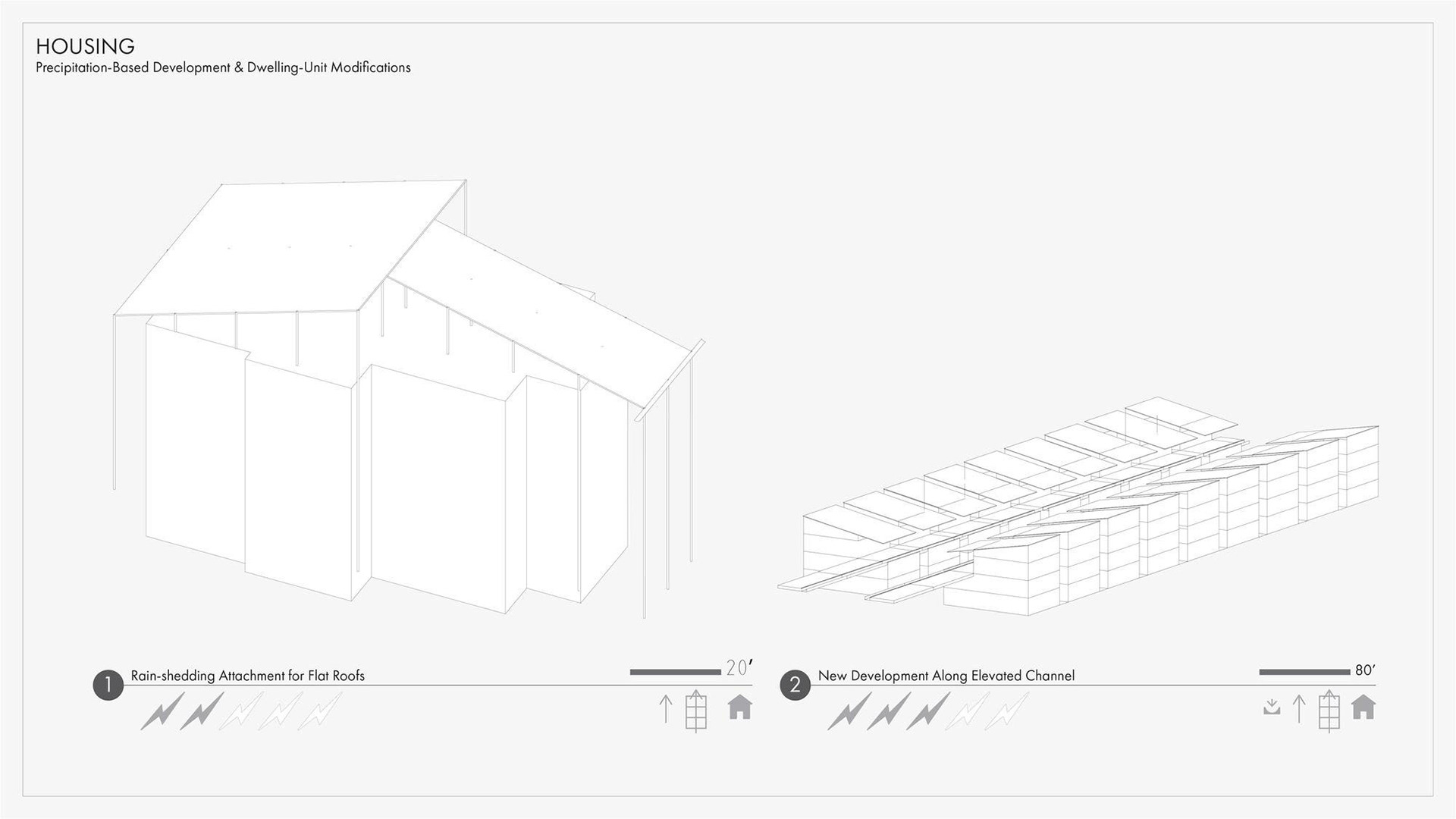
Matrix_Details
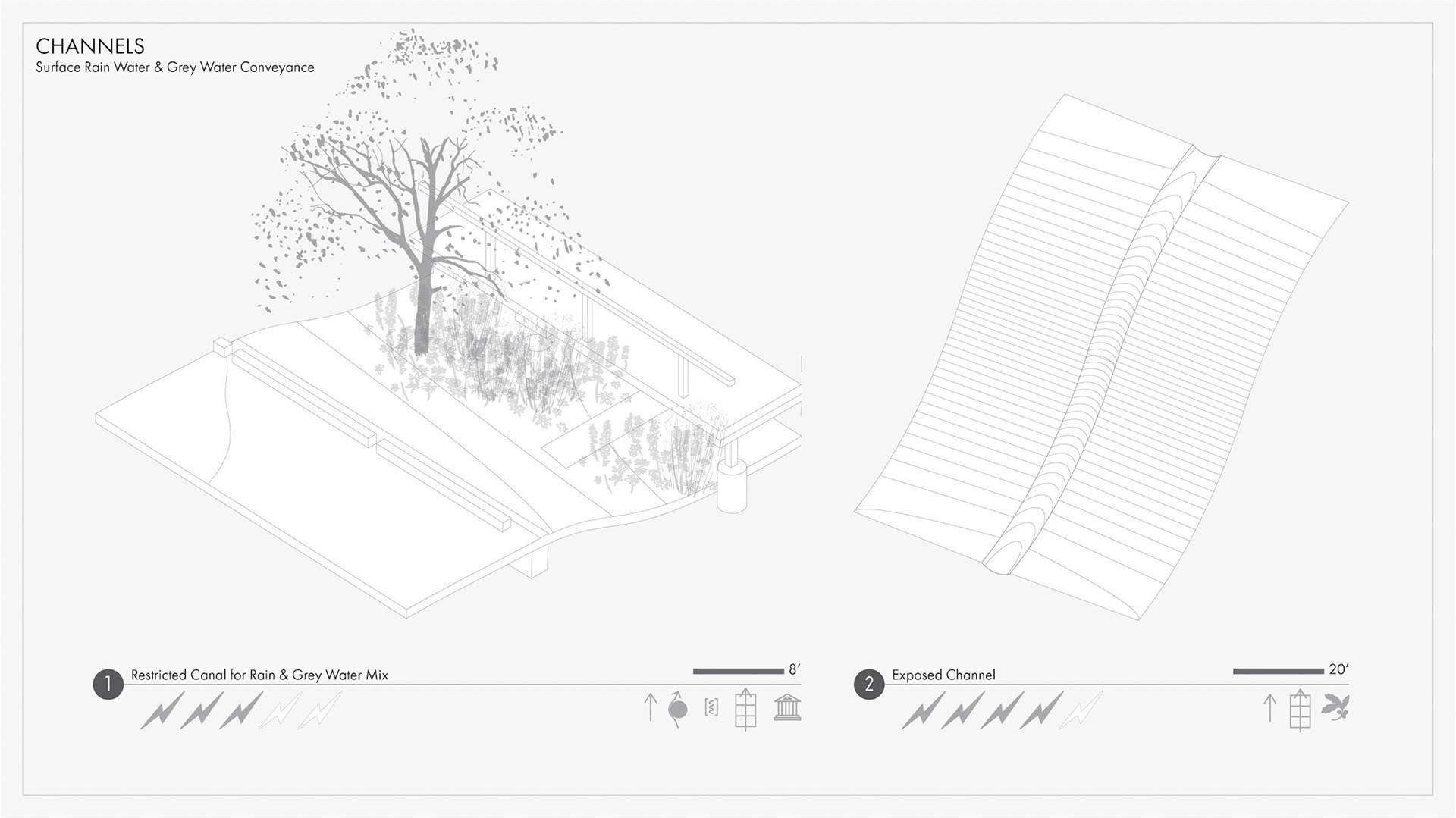
Matrix_Details
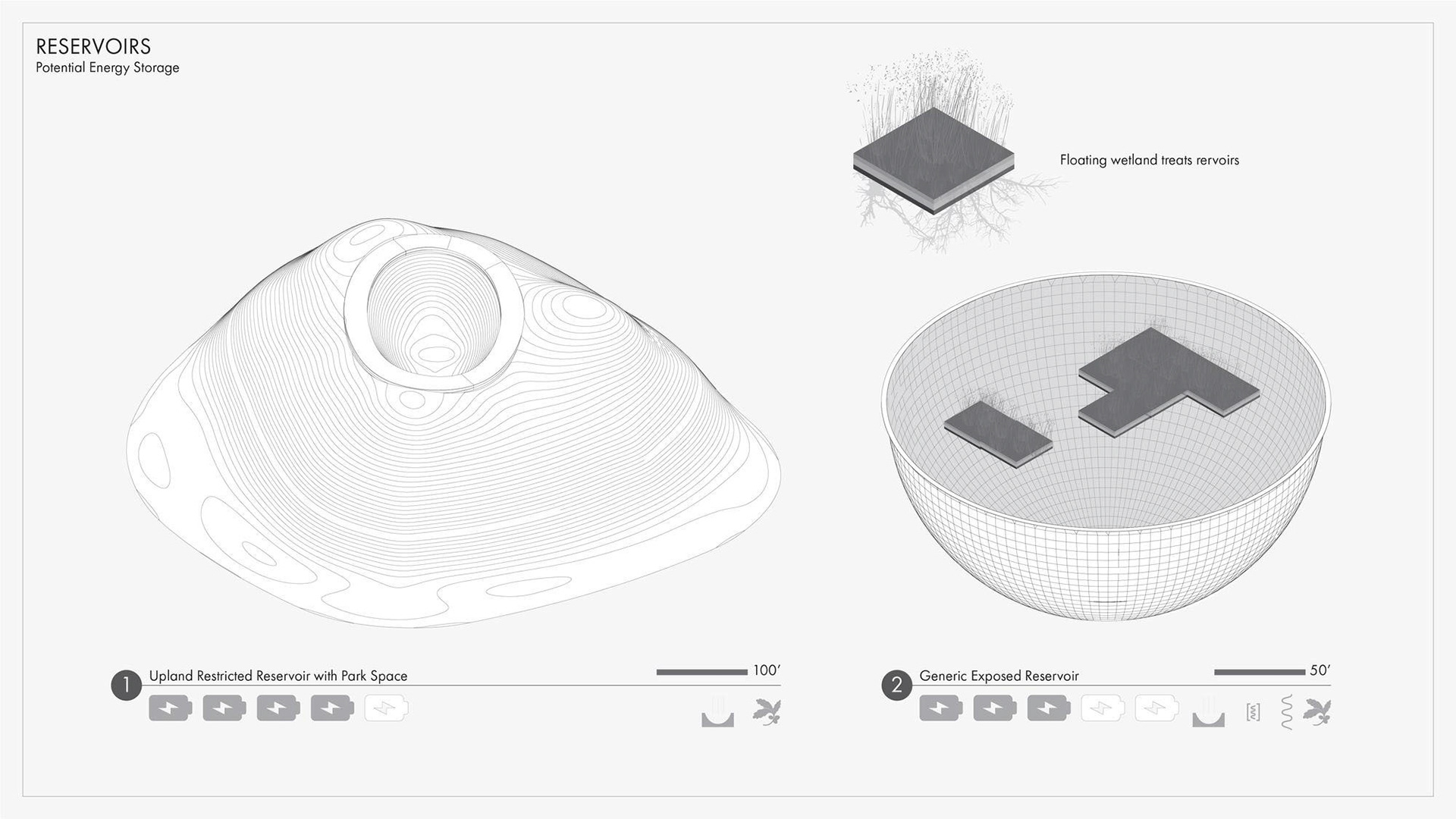
Matrix_Details
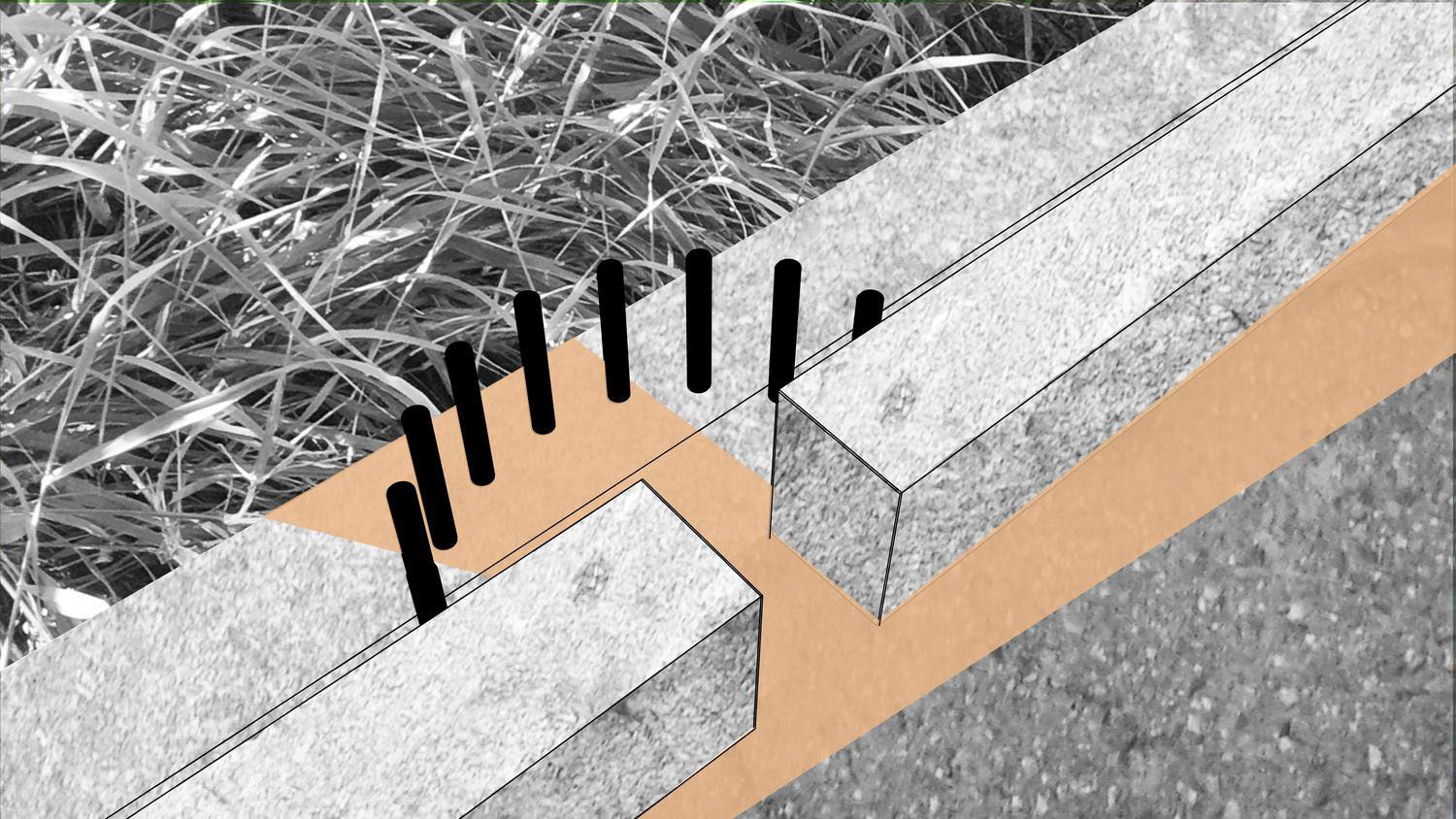
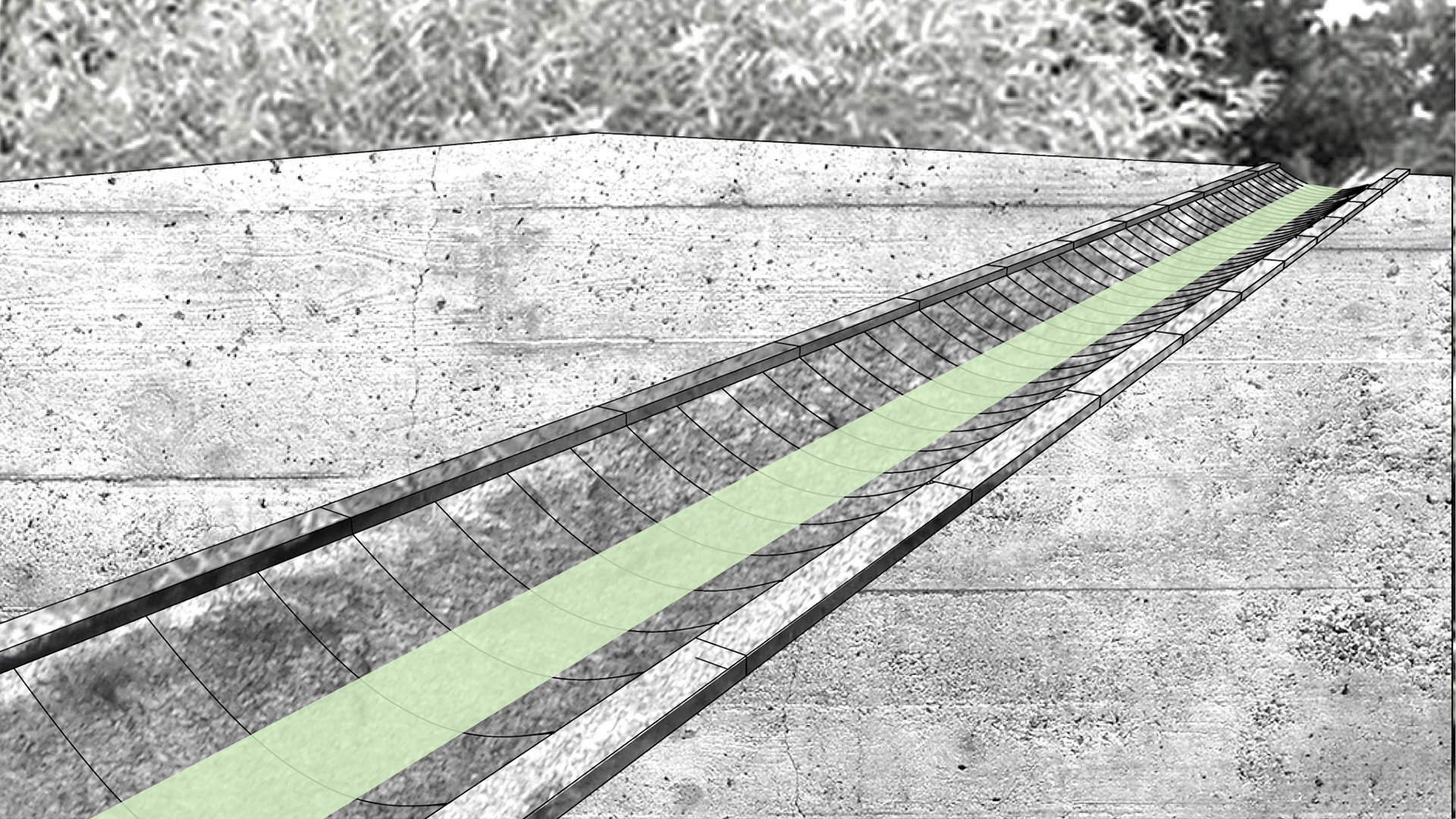
0427_runnel_detail
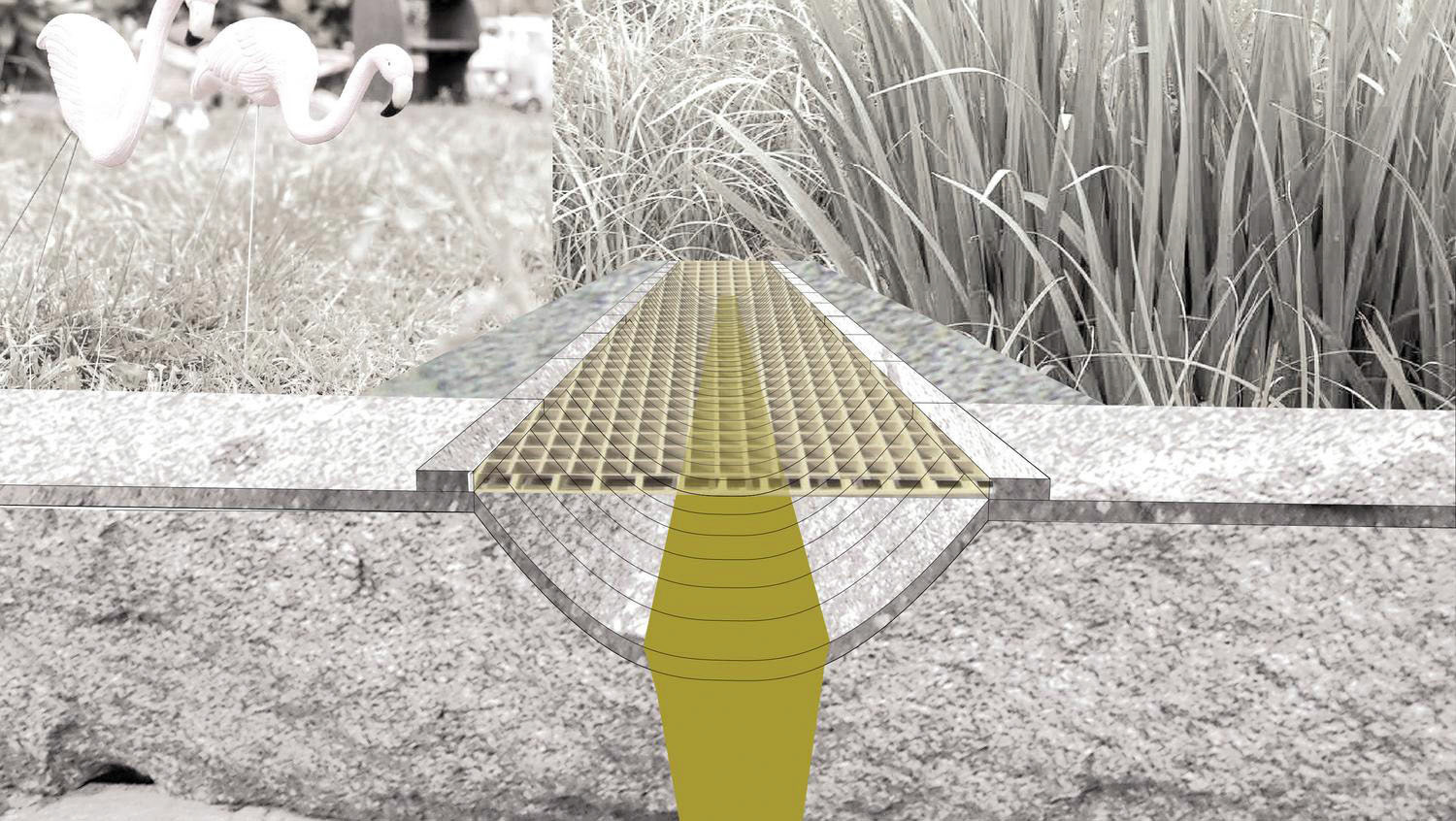
0427_models.3dm
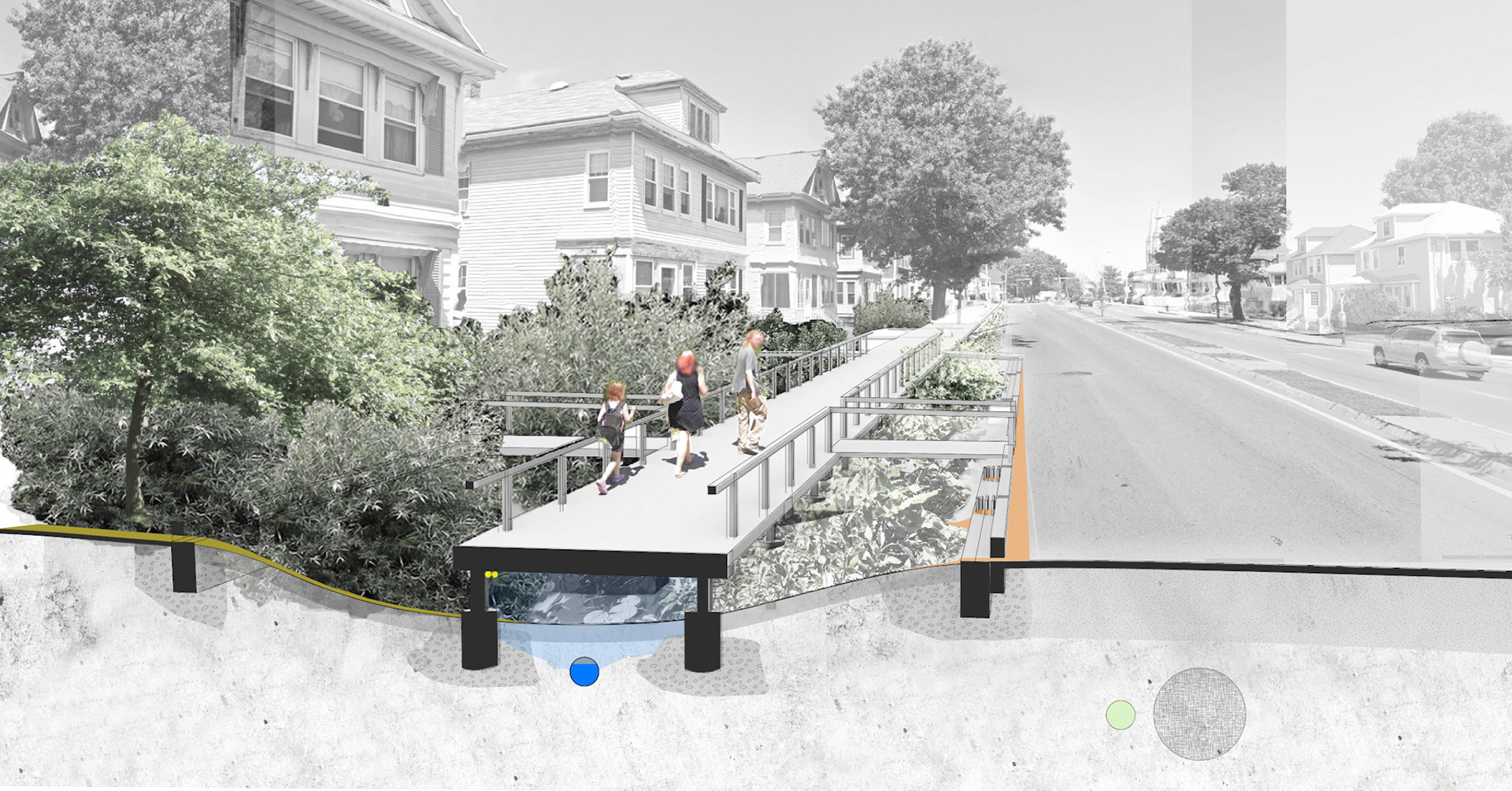
0428_wide_muted
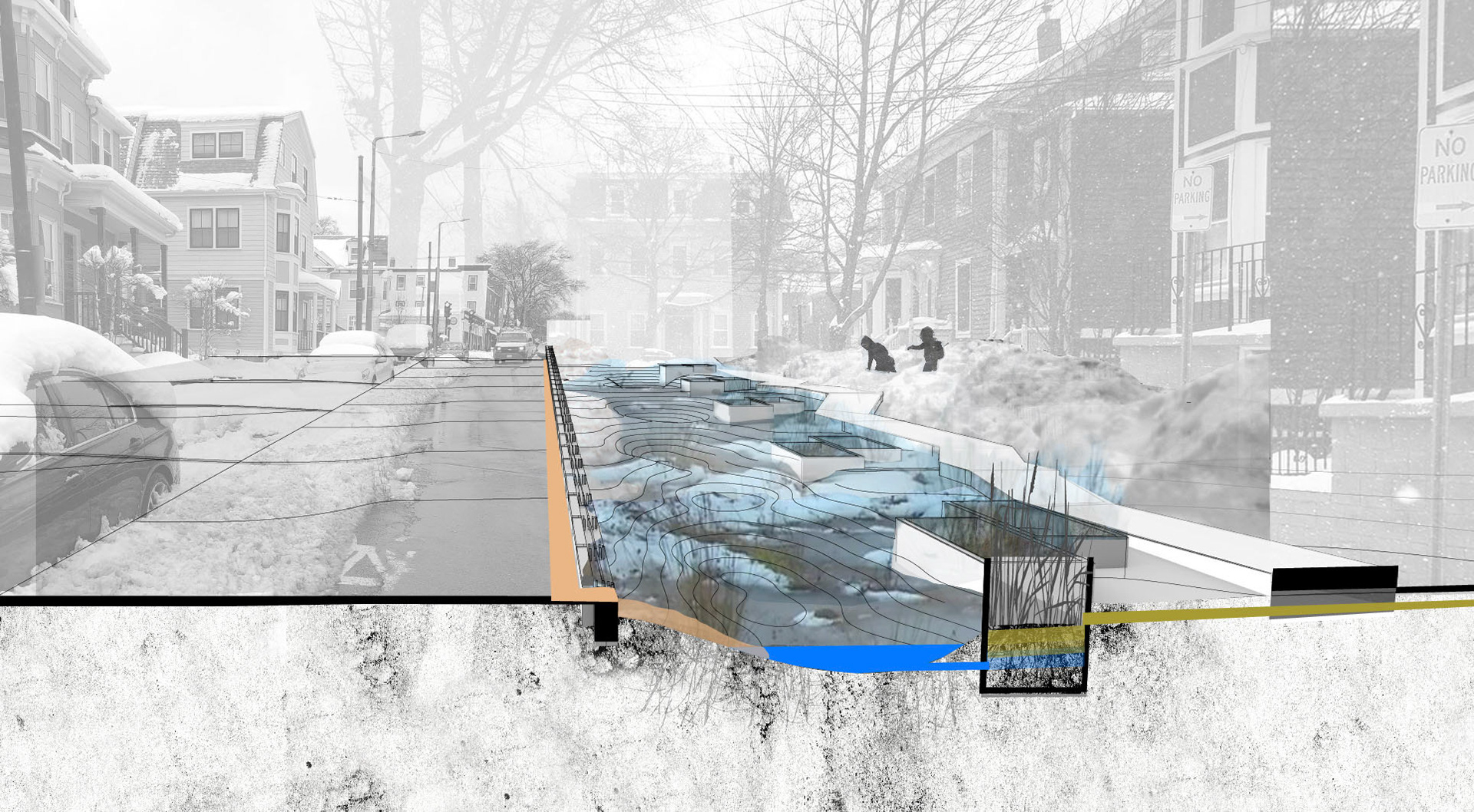
0427_soggy_12pm
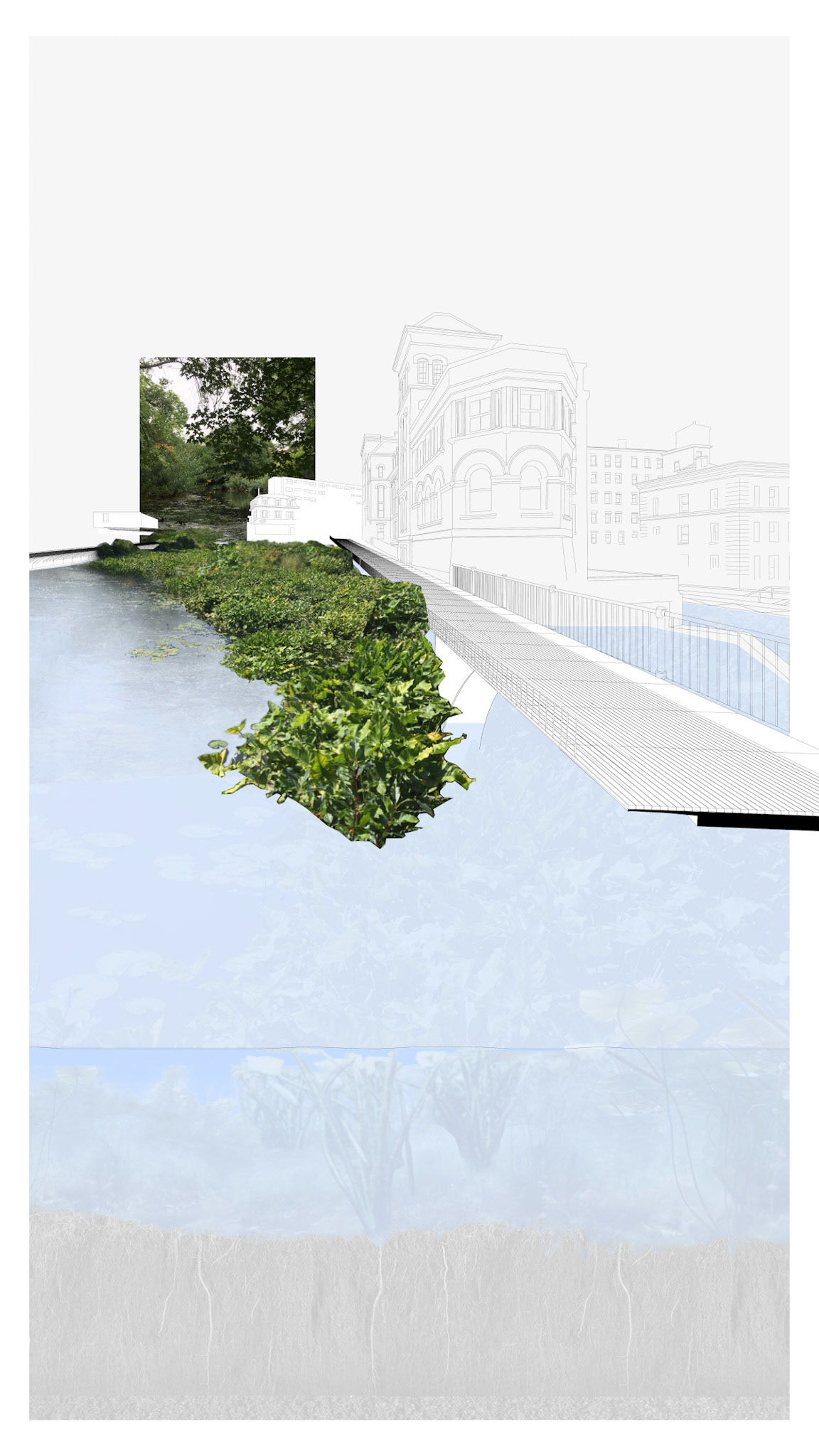
raisedsidewalkview_lowermills
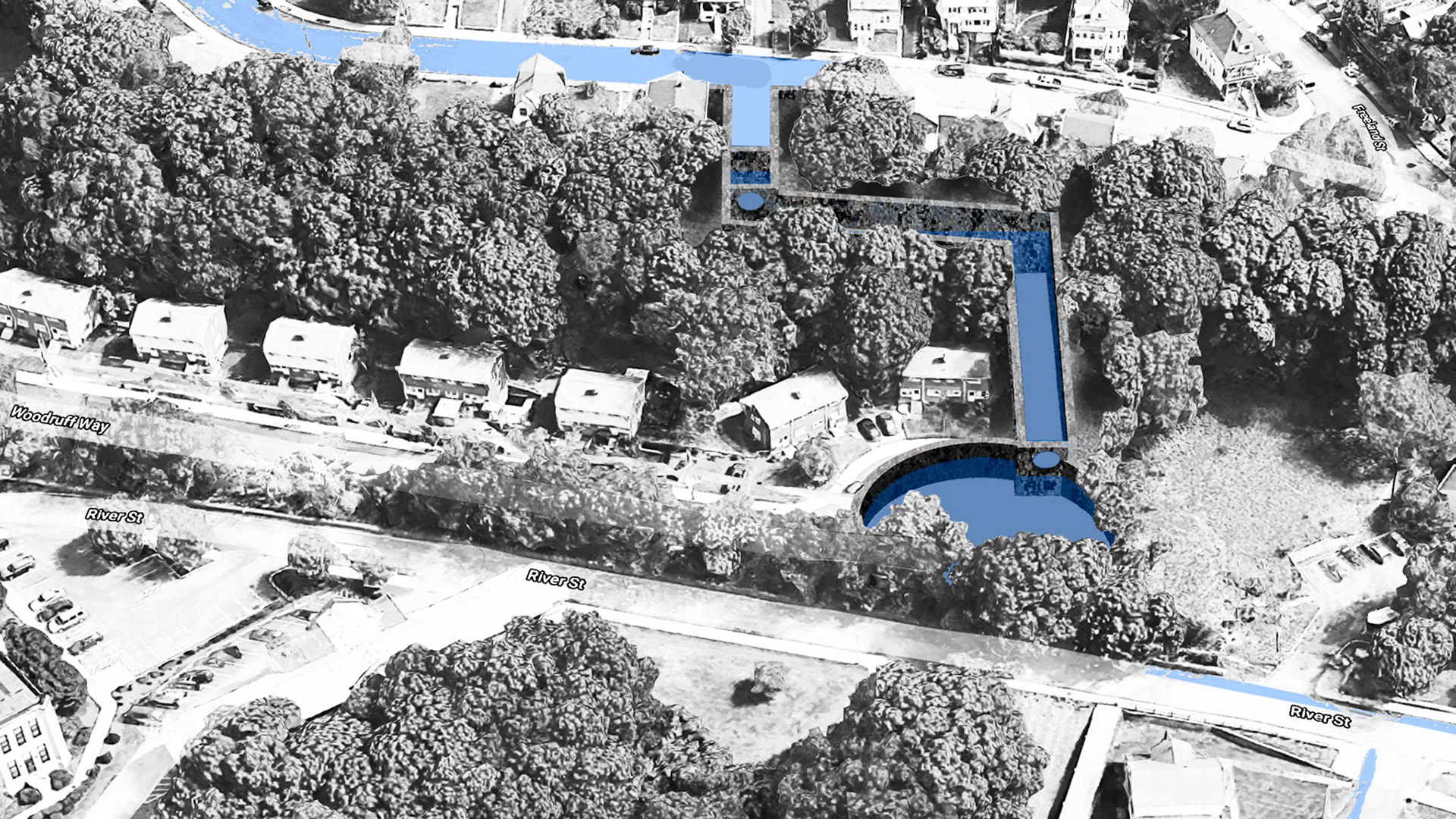
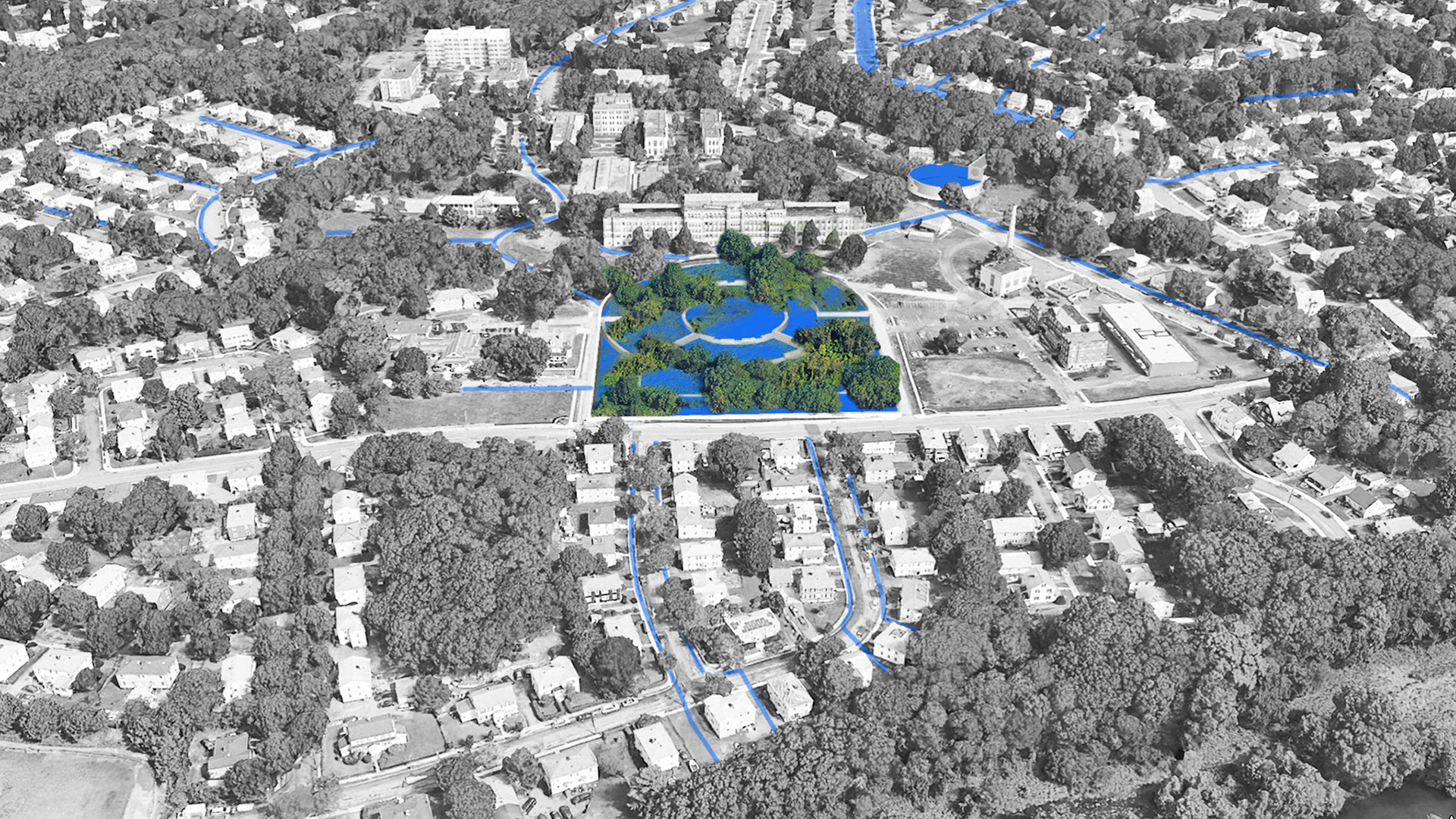
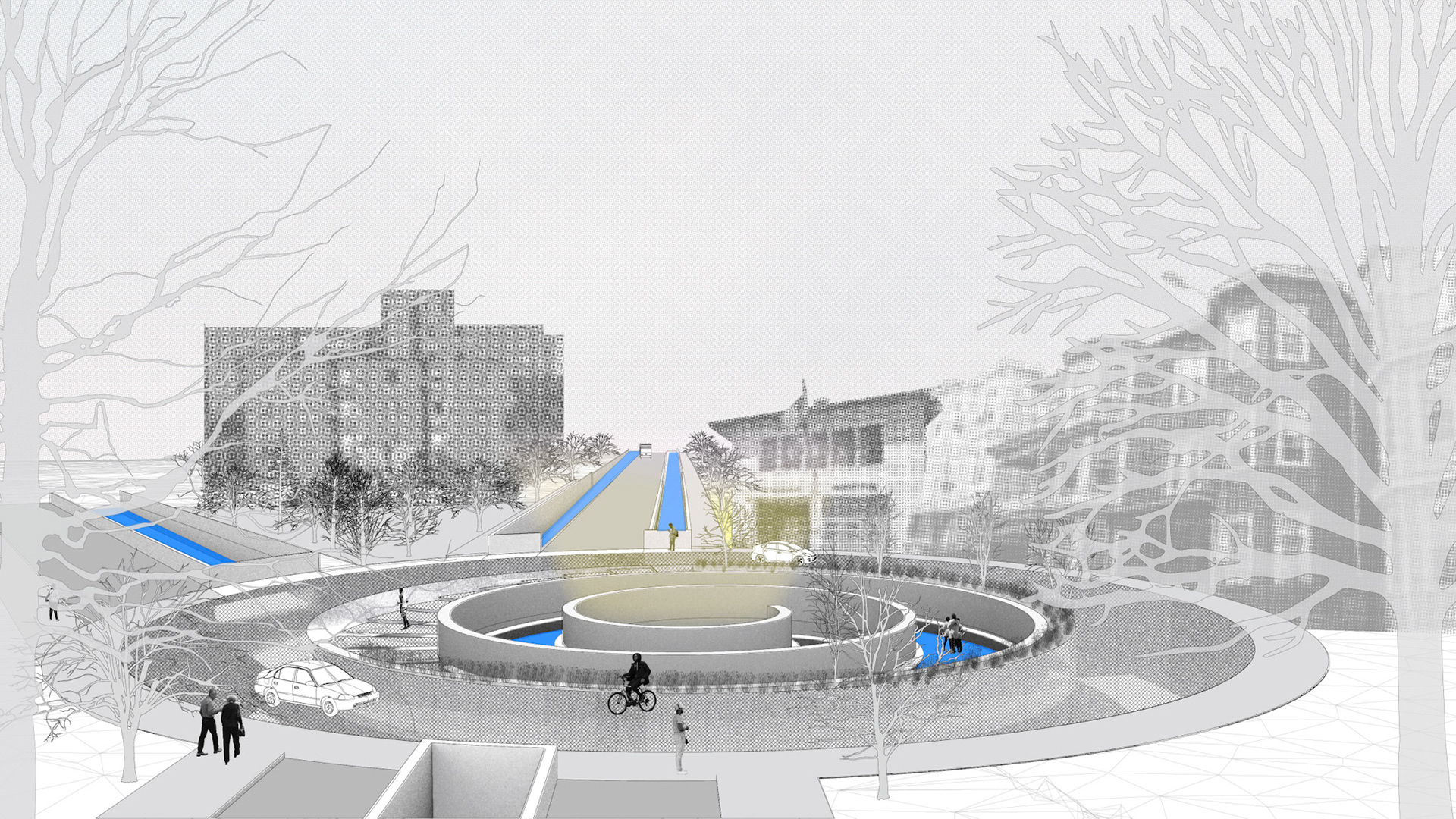
0426_Max_PeabodySpiral_Perspective
Turbines
A variety of turbines are included in this project ranging from small-scale “in-line” turbines that generate power from the force of grey water moving through plumbing to larger rotary turbines placed near the bottoms of large hard-edged canals.
Housing
The EE system supports densifying residential blocks by introducing new structures designed to extend the generative urban watershed into the interior of blocks. By taking advantage of ADU policy, additions are added to the roofs of buildings to encourage water flow into the public rights of way.
Streetscapes
Reimagined through the implementation of the EE system. New elevated walkways are constructed to separate pedestrians and vehicles from grey water treatment canals. Smaller runnels run through alleyways and sidewalks adjacent to small-scale water infrastructure.
Time
Throughout the year, depending on precipitation and energy demands, the EE system will supplement the existing grid. When water is abundant and energy demands low, the system in Dorchester will act as a battery.
The above sections show an overall view of the Elemental Electric system. The proposal amplifies water’s impression on the city – as a form giver, energy source, and sensorial experience.
Just as the parts of Dorchester currently adjacent to the Neponset look, smell, and function differently because of the interaction of water with urban structures, Elemental Electric brings the experience of water into the interior of the neighborhood. It makes legible the urban watershed as a public utility.

